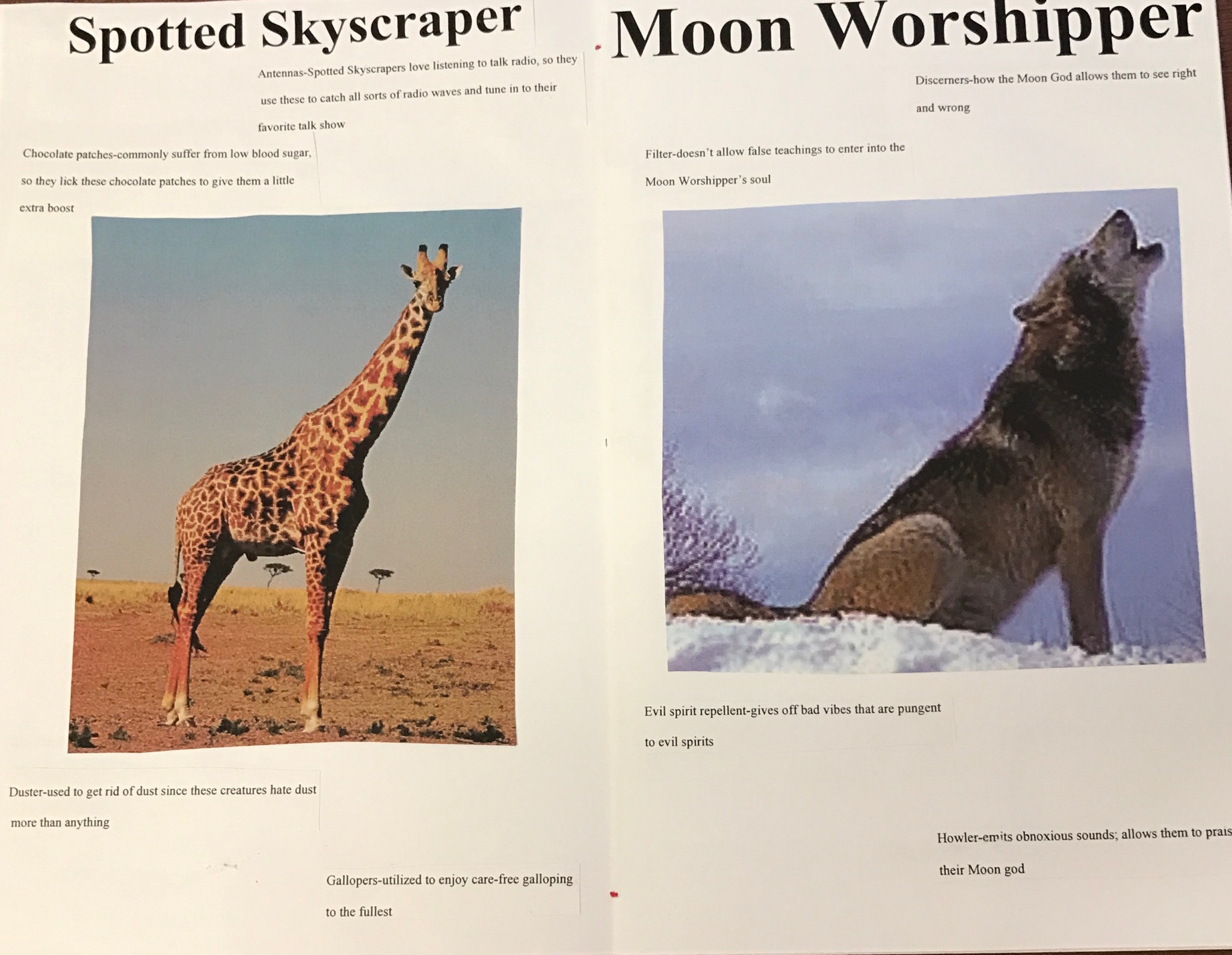A Final Reflection On the Difficult Journey of Making “Animals and Their Anatomy”
To be honest and blunt, I found this book-making process to be very difficult. Each prototype provided its own unique set of challenges and finding a way around them is never easy. Basically, book-making is a truly draining and rigorous process: a truth widely known among all authors. According to Scott Berkun, an author of five popular books, “writing a good book, compared to a bad one, involves one thing. Work. No one wants to hear this…but really writing is a kind of work” (Berkun). Similarly, I found that making my book required lots of hard work and patience. Also, I learned along the way how to cope with the failure of meeting all my goals, since it was an inevitable part of each prototype’s process.
My project was inspired by some memes that I found on Facebook a while ago. These memes showed pictures of animals and assigned them funny names based on their stereotypes. I used this idea and created my own spin off of it by making a humorous and not at all serious animal anatomy book. Each page has a picture of an animal, a creative and silly name to fit its personality, hilarious anatomical descriptions I came up with, and a goofy fun fact about the animal. My main goal was to make this book as light-hearted as possible, so that it would be not only a joy to make, but also a real knee-slapper for the reader. Although this is the basic essence of my final booklet, it definitely did not start this way. I first had to work through four painstaking prototypes to end up there.
My first prototype was fairly unimpressive, despite the fact that I spent a few hours making it. As you can see in the pictures below, I was able to put together a preliminary binding, come up with names, and add pictures.
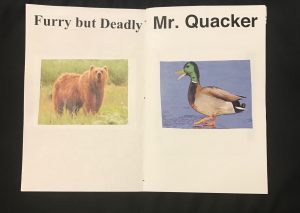
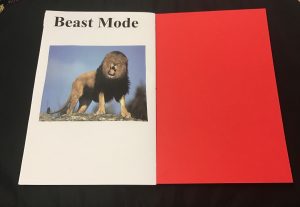
Coming up with this idea took me quite a while, and even after I came up with my idea, it still took me a long time to settle on the images I wanted to use and brainstorm witty names. Not only that, but gluing all the pictures and names into the book was incredibly tedious. Overall, this first draft of my book really opened my eyes as to how much hard work this book was going to be and how easy it was to fail at reaching your goals. I realized that for my second prototype, I was going to need to allocate much more time to work on it. I had failed to add in the anatomical descriptions like I had wanted to, so I made that my goal for the next prototype.
For my second prototype, as you can see in the images below, I was successfully able to add in the anatomical descriptions for the animals as I had hoped to. Each animal got four descriptions based on my interpretations of their personalities.


Here are some close-ups of a couple of the descriptions.


(Description for ‘MURICA!!) (Description for Moon Worshipper)
It took me almost a whole day to come up with all of the witty descriptions (48 total). As you saw above, “Freedom Screecher” for an eagle’s mouth is fairly witty, not to mention the creativity of the description “lets freedom ring across the whole U.S. of A” that describes it. As I’m sure you can see, it took a lot of hard work to come up with stuff like that 48 times. On a different note, I sadly wasn’t able to add in arrows to connect the descriptions to their anatomical structures like I wanted, but I learned that this failure was ok and instead made it a priority for my third prototype. I also aimed to make my next prototype more aesthetically pleasing by adding some more color.
My third prototype definitely failed to meet my goal of increasing the aesthetic appearance. As you can see in the pictures below, I was able to add in neatly drawn arrows to match up anatomical structures with descriptions, but wasn’t able to add much to the aesthetic appeal.
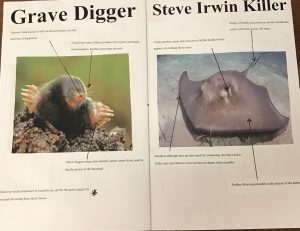
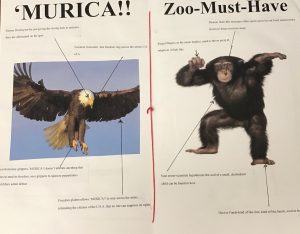
I fell very ill while making this prototype, which is why I was only able to find the energy and time to add the arrows. It was really hard to accept my real lack of progress, but I learned that I needed to take care of myself and could make up for the aesthetic appeal in the final prototype. I decided that for the final prototype I could increase aesthetic appeal by making up fun facts about the animals and decorating them with some markers.
In my fourth and final prototype, as you can see below, I added fun facts for each of the animals and made it into a flip-up structure decorated with different colors.
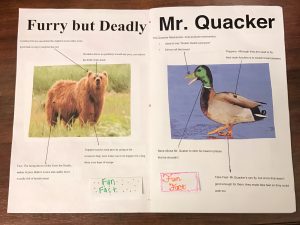
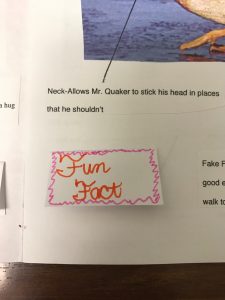
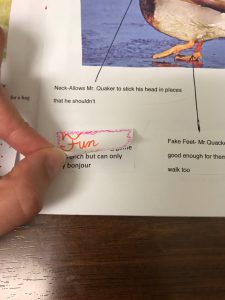
The fun facts are very similar in style to the anatomical descriptions. I added to the “fun” aspect of these fun facts by drawing the cool designs and using varying colors. The major lesson I learned from this last prototype was that I didn’t have to keep pushing to make the book overly aesthetic, rather I could just add in a little and be happy with that! Looking back, adding in any more aesthetics might have been too much stimulus overload for the reader. My final prototype’s strength was in its words: the unique descriptions, names, and fun facts. Forcing excessive aesthetics may have taken away from the beauty of all that. I’ll admit my book is inherently limited in its artsy aspects, but I am overall pleased with the way it turned out.
This whole project has been a crazy journey, but what it has taught me is that I don’t always need to meet all my goals for everything. I see now that failure is ok, as long as I can take these failures and learn from them to help myself in the long run.
Works Cited:
Berkun, Scott. “How to write a book- the short honest truth.” Scott Berkun, 15 Aug. 2007. Accessed 7 May 2017.
